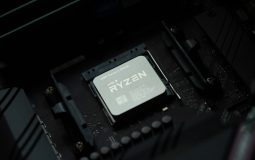In the ever-evolving world of real estate investment, creative financing options like owner-financed deals offer buyers and sellers a flexible alternative to traditional bank loans. These arrangements, also known as seller financing, can open the door to opportunities that would otherwise be blocked by strict lending regulations or poor credit backgrounds. While alluring, these transactions involve a complex web of negotiations—particularly around terms, interest rates, and balloon payments. Understanding how to adeptly navigate these aspects can spell the difference between a win-win deal and long-term regret.
Whether you’re a first-time investor or a seasoned property expert, learning the intricacies of owner-financing can elevate your financial strategies and lead to profitable ventures. Let’s explore what makes these deals tick, and how you can master the art of negotiating their key components.
Why Opt for Owner Financing?
Owner financing essentially lets the property seller act as the bank. Instead of applying for a mortgage from a traditional lender, the buyer agrees to pay the seller in regular installments over time. This arrangement can be a boon for investors in several ways:
- Accessibility: Buyers with poor or no credit history can still acquire property.
- Speed: Transactions can be completed more quickly without the delays of loan processing.
- Negotiability: Terms are flexible and subject to mutual agreement.
- Investment Opportunity: Sellers can earn interest income and often receive a premium sale price.
The flexibility of owner-financed deals also makes them appealing in competitive or fluctuating markets, where traditional financing might fall short.

Essential Elements of an Owner-Financed Deal
Before diving into negotiations, it’s crucial to understand the key components that make up an owner-financing agreement:
- Promissory Note: The legal document that spells out the terms, interest rate, repayment schedule, and consequences of default.
- Deed of Trust or Mortgage: This secures the note, typically allowing the seller to foreclose if the buyer defaults.
- Down Payment: A larger upfront payment is typically required compared to traditional loans, reducing the seller’s risk.
- Term and Amortization: Duration of the loan and the rate at which it’s paid off.
- Balloon Payment: A lump sum due at a specified time, often used to reduce the duration of monthly payments.
Negotiating the Terms
Negotiation is where the magic happens. Crafting a successful owner-financed deal means finding a balance between the interests of both buyer and seller. Here are the most critical areas to focus on:
1. Purchase Price and Down Payment
Since sellers in these deals are taking on more risk, they may demand a higher purchase price or larger down payment. That said, the down payment is up for discussion. A well-prepared buyer might leverage things like property repairs or fast closing dates to negotiate a lower upfront cost.
The buyer should provide financial statements or proof of income to reassure the seller of their ability to fulfill the payment plan. Transparency and planning make a convincing case.
2. Interest Rates
Interest rates in owner-financed loans are higher than those of traditional mortgages. This compensates the seller for the risk and the lack of liquidity. They typically range from 5% to 10%, depending on the buyer’s financial profile and current market trends.
One benefit here is that the rate isn’t set by federal lenders—it’s fully negotiable. Buyers with better credit, larger down payments, or strong business plans can argue for lower rates, minimizing overall costs.
3. Repayment Structure
Monthly payments typically include principal and interest but may also involve property taxes and insurance in some agreements. You may negotiate for interest-only payments for a set time, or a gradually increasing payment schedule if you’re expecting income growth.
Tip: Be sure to calculate not just what you can afford now, but also what you can reliably sustain over the course of the agreement. Failing to consider long-term cash flow can result in serious financial strain.
4. The Balloon Payment
One of the most overlooked—yet vital—components of owner financing is the balloon payment. In many deals, the loan doesn’t fully amortize. Instead, a large lump sum (balloon) payment becomes due after 3 to 7 years.
This arrangement helps sellers recoup their equity faster and lowers the buyer’s monthly payments, at least initially. However, it also places pressure on the buyer to refinance or sell the property before the balloon comes due.

You should always ask these questions before agreeing to a balloon clause:
- What is the exact date the balloon payment is due?
- Will I be in a financially strong position to refinance at that time?
- What happens in case the property’s value drops?
Understanding the risks and planning ahead helps prevent a situation where you’re forced to sell in a downturn or default on the obligation.
Protecting Both Parties
No matter how agreeable the terms, both parties need protection. Here are a few strategies for ensuring the deal remains fair and enforceable:
- Title and Liens: Always perform a title search to ensure the seller actually owns the property and that there are no hidden liens or encumbrances.
- Legal Assistance: Use a real estate attorney or title company to draft the documents and register the lien with the appropriate entity.
- Escrow Services: Consider using a loan servicing company to manage payments, taxes, and insurance. This builds trust and ensures accuracy.
Exit Strategies
Many investors enter owner-financed deals with long-term goals in mind, but it’s equally important to build in an exit strategy. Here are common paths:
- Refinancing: Buyers may refinance with a traditional lender before the balloon payment comes due.
- Reselling: If the property has appreciated, selling it can cover the balloon and deliver profits.
- Rent-to-Own Conversion: For investors, converting the property into a rent-to-own model can provide cash flow while building a future sale opportunity.
Pro Tip: Always include clauses for early payoff or refinancing in your promissory note. Flexibility later can mean big savings and fewer headaches.
Final Thoughts
Owner-financed deals are not just a workaround—they’re a powerful financial tool that can be tailored to fit unique buyer and seller needs. Key to their success is a thorough understanding of interest rates, repayment terms, and balloon payments. With careful planning and solid negotiation, these elements can be structured in ways that foster trust and mutual benefit.
So whether you’re leveraging them to grow a profitable portfolio or simply looking to buy your first investment property, take the time to study your options, consult professionals, and build a deal that makes sense over the long haul.
Because when structured right, an owner-financed deal isn’t just a transaction—it’s a strategy for legacy wealth.








